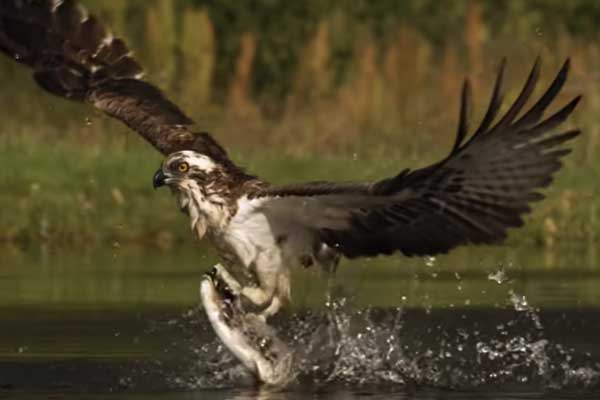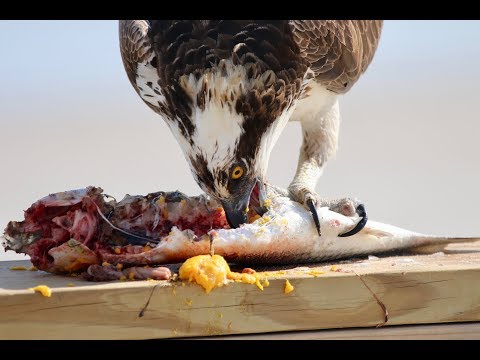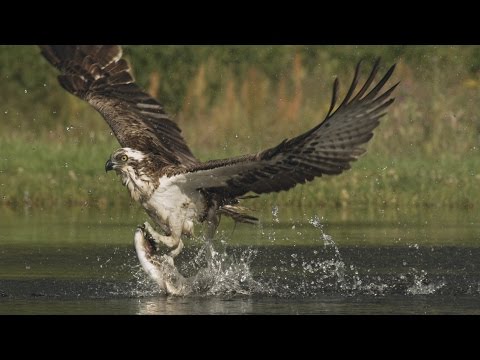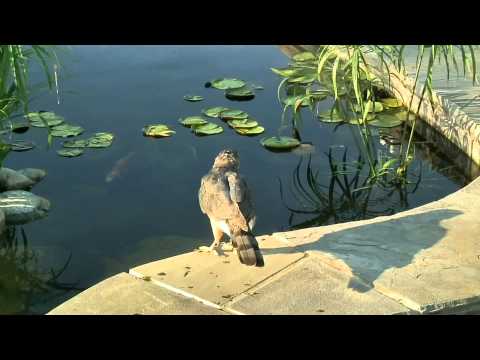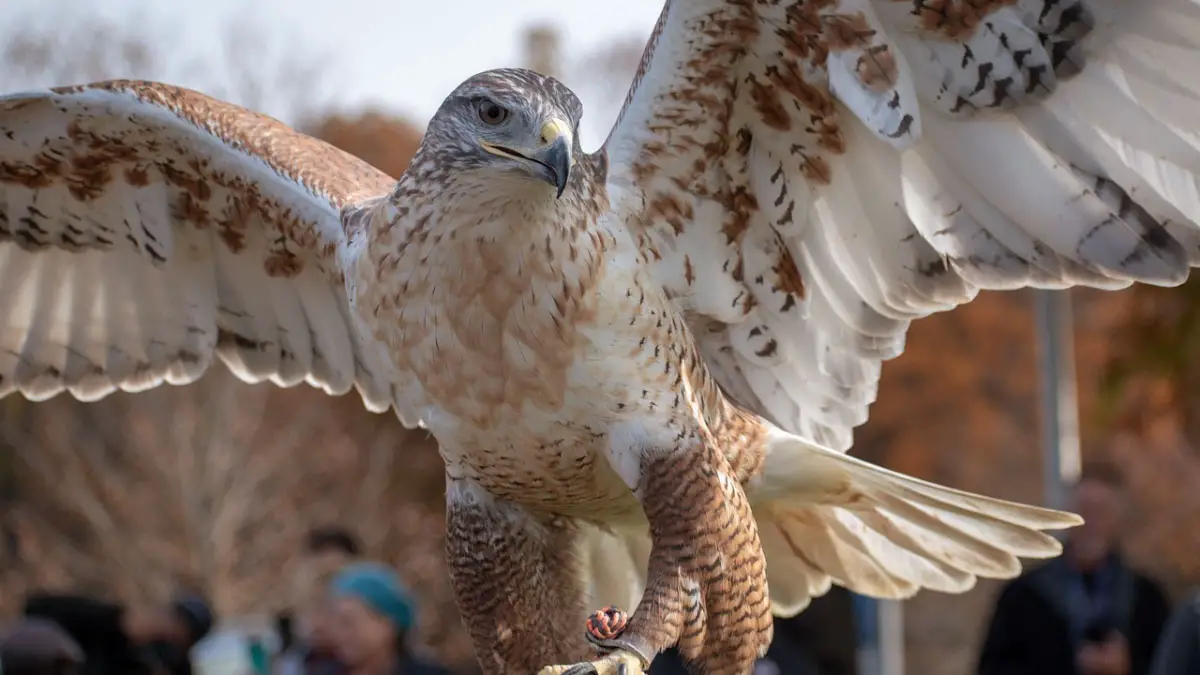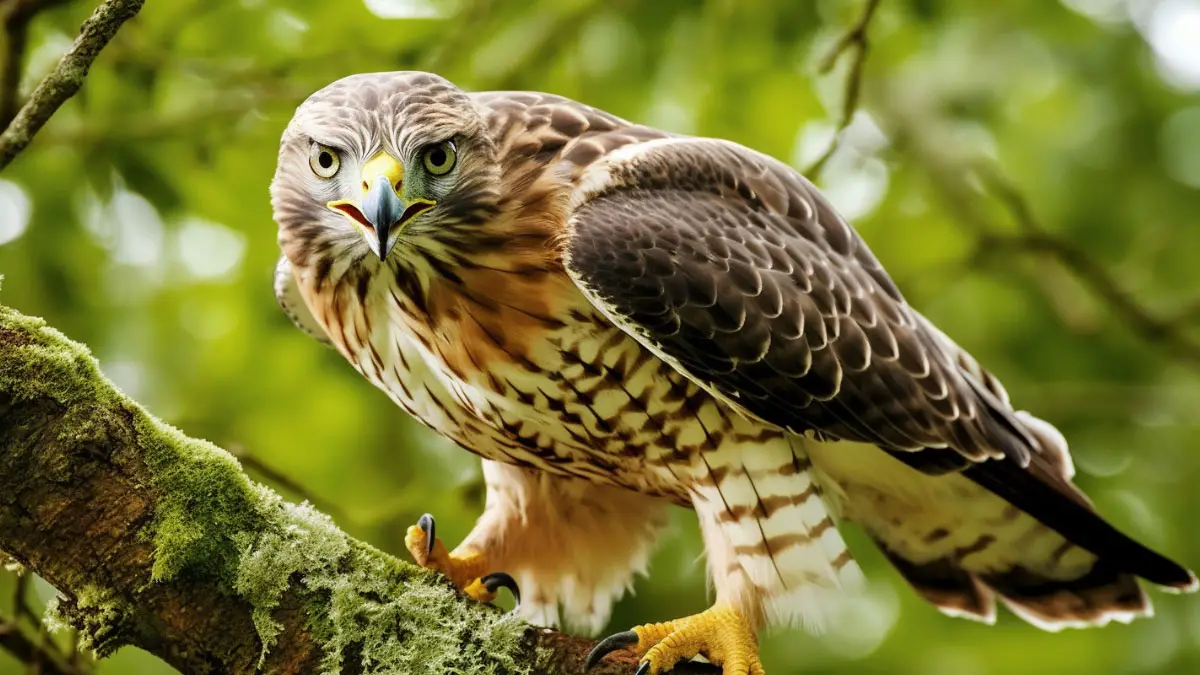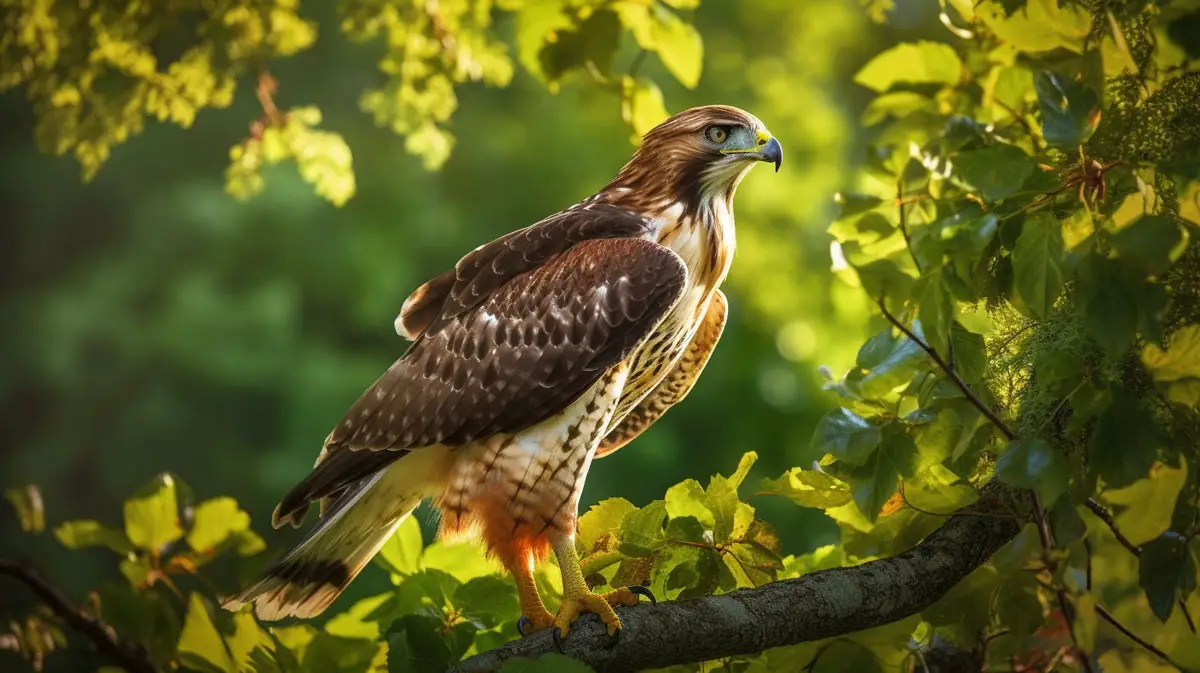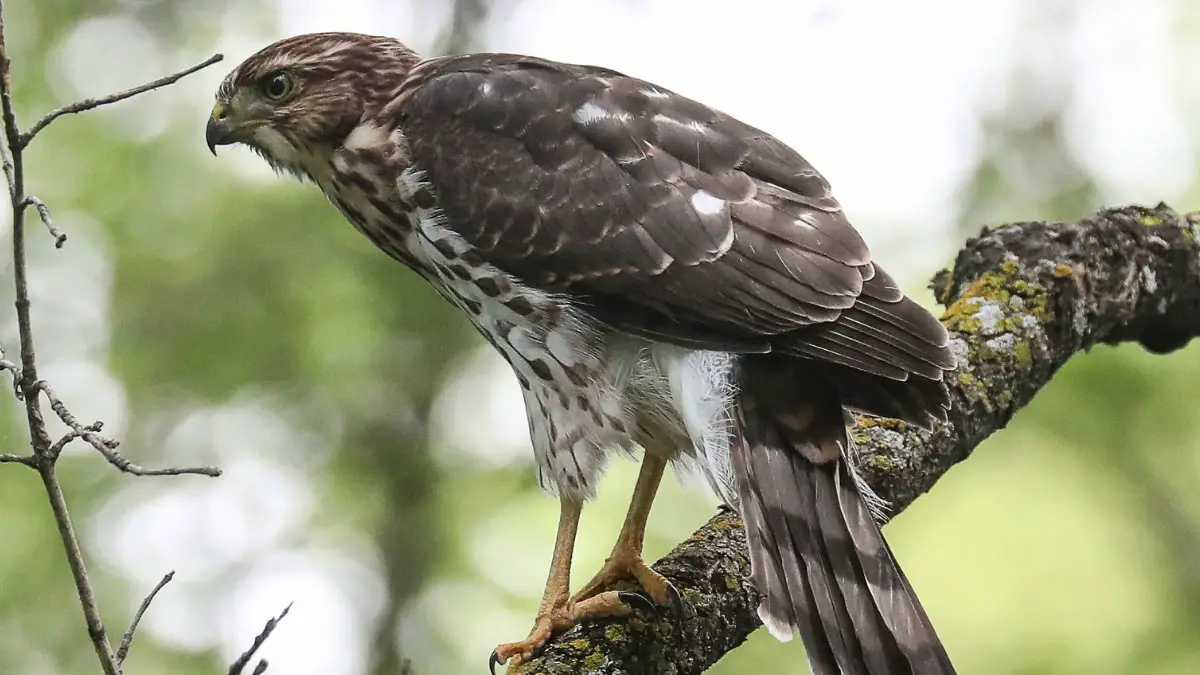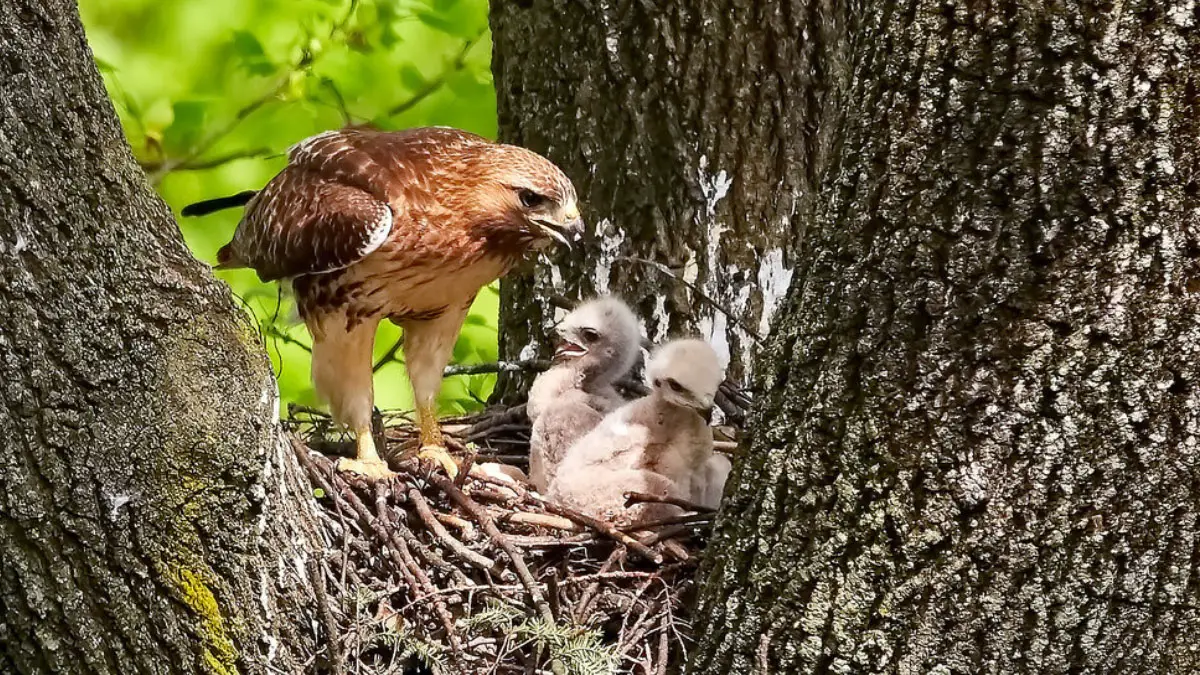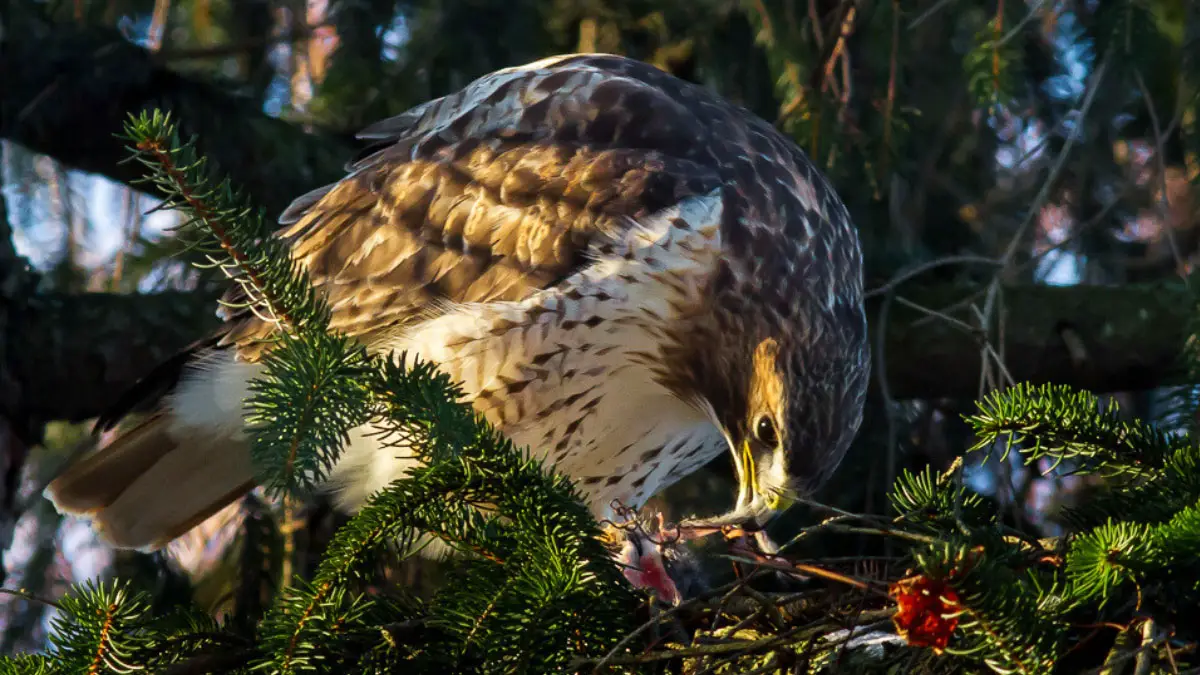Hawks are one of the well-known birds of prey; they’re carnivorous and depend on the meat of other animals for survival. Their diet mostly consists of small mammals such as moles, rats, mice, squirrels, and more. But when these foods are scarce, the predators won’t shy from hunting for other food types.
And this brings us to our main question: Do hawks eat fish? Yes, hawks feed on fish. Most hawk species occasionally hunt and feed on the fish, including the red-shouldered hawk, red-tailed hawk, Cooper’s hawk, etc. These birds are opportunistic hunters and won’t hesitate to hunt for alternative foods when their primary food sources get scarce.
We’ve researched more details about hawks eating fish and compiled the in-depth guide below. You’ll discover more about the species of hawks that eat fish, how the birds hunt for fish, and bonus tips on protecting your fish pond from these predators.
Do hawks eat fish?
Hawks are carnivorous, and their common prey is small mammals such as rabbits, rodents, squirrels, hares, etc. But as we’ve just said above, they are opportunistic hunters. They will occasionally go hunting for fish and other birds if their food sources get scarce.
This puts them in the same category as a handful of other birds that feed on fish meat, including the Peregrine Falcon, white-tailed eagle, Indian spotted eagle, Steller’s sea eagle, gray-headed fish eagle, African fish eagle, bald eagle, snowy owl, and others.
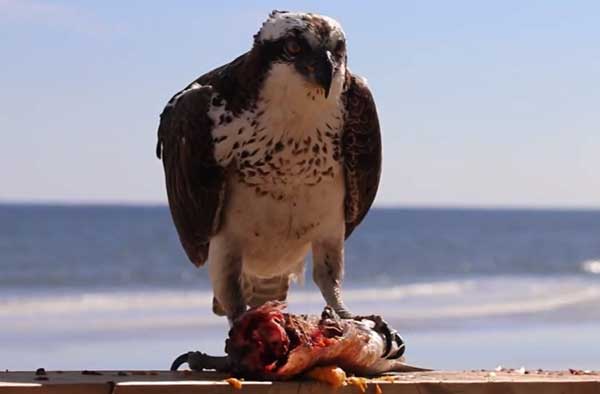
However, not all hawks have been observed eating fish. There are specific species that are fonder of fish and other aquatic animals than the others as discussed in the next part.
What hawks hunt fish?
The red-tailed hawk is one of the hawk species that eat fish. This is a bird of prey found in North America, though it has also been introduced in South America. The hawk lives near water sources such as lakes, rivers, and coasts since it eats fish and other animals that live in water.
Red-shouldered hawks also eats fish. These birds live in Eastern U.S and extend through California and Florida. Their diet usually consists of small mammals, but they also eat other birds if there are any around to hunt and, occasionally, fish.
The Western Osprey is also known as river hawk, sea hawk, or fish hawk and is mainly found on the west coast of North America through South America. This hawk is fond of fish and other animals living near water bodies. The bird usually feeds on small to medium-sized fish.
However, ospreys have also been observed catching Salmons as large as 8 pounds. And they’re found around rivers and lakes with high fish populations. They’re also found along shorelines, waterways, and near-coastal cities like Los Angeles.
Straight from the family Accipitridae, Northern Goshawk is another hawk that eats fish meat. These hawks are usually found anywhere from Alaska to Newfoundland and south to Arizona, California, Florida, and New Mexico.
The Goshawks mainly inhabit wooded areas where they easily get food like small mammals, rodents, deer, etc. But they also hunt other small birds and (occasionally) fish.
How do hawks kill fish?
Hawks dive into the water to get fish. It is a spectacular show watching these birds dive into the water and take off with a fish!
To understand how hawks hunt fish, we’ll focus on the osprey hawk since it feeds almost exclusively on the fish.
These birds have a unique hunting strategy which, together with their physical attributes, increases their hunting success. They usually catch the fish that’s most abundant in their hunting area. But studies have pointed out that some individuals prefer specific fish types and sizes.
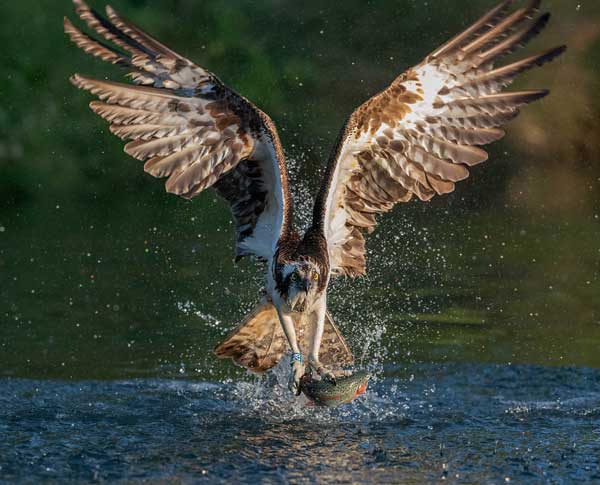
This is a hawk (Osprey) catches a fish:
- Spotting the prey: The bird starts by flying over the water at the height of about. 30-130ft. During this stage, it scans the waters below for any fish. The exceptional hawk vision enables the bird to view the fish inside the water perfectly well.
- Diving into water: Once the bird spots a potential prey, it hovers for a short while as it decides whether to dive and get it or wait for a better opportunity. Sometimes the predator will attack without hovering if the opportunity arises and is highly likely to be a successful catch. The bird may also dive without hovering if the prey is moving and there is no time to waste hovering.
- Plunging into water: The hawk typically dives on a vertical or diagonal trajectory depending on the fish’s location. It may also take some wing beats to gain speed or cover some distance. Before it plunges into the water, it extends its legs forward, ready to grab the prey.
- Getting airborne again: After the bird successfully catches the fish and it’s held in its talons, it’s time to take off. Sometimes, the fish may take time in the water to better grasp and accommodate before taking off. The larger fish usually take a bit longer to handle. If a fishing attempt fails, the hawk takes off quickly!
Note that hawks are diurnal birds and are usually active during the day. Contrary to the common misconception, you’ll not find a hawk hunting at night or after the sunset!
The video below gives you a spectacular glimpse of the Osprey in action. Notice how it dives into the water and catches a big trout, then carries it with its talons and flies away with it.
Do hawks eat pond fish?
If you’re wondering, “do hawks eat pond fish?” they do. If you watch them closely, you may see them dive in or swoop over your pond and come out with fish grabbed with their powerful talons.
Remember, Hawks are efficient hunters and have great physical attributes that enable them to easily catch fish from your pond. This puts them in the same category as birds that fish from ponds, such as the Kingfisher, waterfowl, gulls, cranes, and cormorants.
However, a hawk perching at your pond is not always after your fish. Sometimes these prey birds may play protection, and chasing them away might not be a good idea. Take your time to determine if the hawk is a threat to your pond before taking action.
The hawks may be providing protection against animals that eat your fish and turtles, such as the raccoons, snakes, rats, foxes, egrets, etc. These make a ready meal for hawks and won’t dare come anywhere near it, so they opt to leave your pond alone.
This is why you’ll find most pond owners placing hawk decoys around their ponds to protect their aquatic animals from these predators.
How do I protect my pond fish from hawks?
If you have witnessed a hawk hunt fish out of your pond, it is a threat to your fish, and you need to take action.
Here are effective measures to put in place to ensure your fish stay safe from this predator:
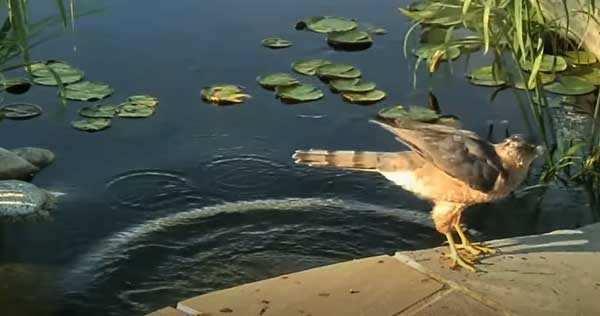
- Place netting over the pond as a visual deterrent against these birds of prey. But make sure you use sturdy nylon netting and not some cheap plastic netting that hawk beaks can easily slice through.
- Placing reflexive streamers around your pond (tie them to plants near the pond) will make the hawks move on to other hunting areas.
- Motion-activated sprinklers are another way to keep the hawks from getting the fish out of your pond. By shooting water at the birds, this device will give them a right and easily scare them away!
- Try introducing a hiding spot for the fish inside your pond. For instance, you can introduce floating plants, a piece of PVC pipe, or other structures at the bottom of the koi ponds where the fish can swim and hide. This will give the fish a safe hiding spot when the predator comes hunting.
- You may also scare away the bird of prey by installing alarms and fishing lights around the pond. The alarm goes off when the bird moves near the water, scaring it away.
Related questions:
Cooper’s hawk mainly involves small to medium sized birds. However, they also tend to supplement their diet with other food types like small mammals, reptiles, and occasionally fish, insects, and amphibians.
Ospreys and sea eagles are two birds known to eat big fish. The ospreys tend to eat small to medium-sized fish, though they would also eat a fish as big as a salmon. The sea angle will feed on various sizes of fish depending on what’s available in the bodies of water they hunt in.
The osprey or fish hawk has been observed diving in the water. It does so with its feet extended forward on either side of its head. This enables it to keep sight of its target fish throughout the dive duration. The feet hitting the water first also help protect its head during the dive.
Final Verdict
Hawks are predatory and depend on other animals’ meat to survive. They mostly feed on small mammals, but they will eat fish if they chance upon them or if their main food sources become scarce. Most hawks will hunt fish occasionally, save for the Osprey, which almost exclusively feeds on fish.
Remember, these birds of prey are pretty good at hunting fish out of rivers, lakes, or even your backyard pond. They dive and plunge into the water to catch the fish and then take off from the water with their catch.
Do you want to know if hawks eat other birds or coyotes? Read our articles about it to learn more.
